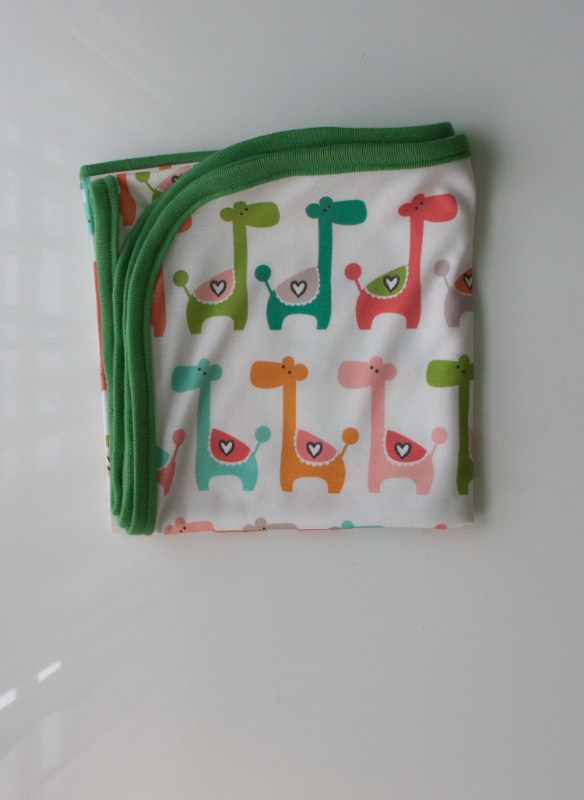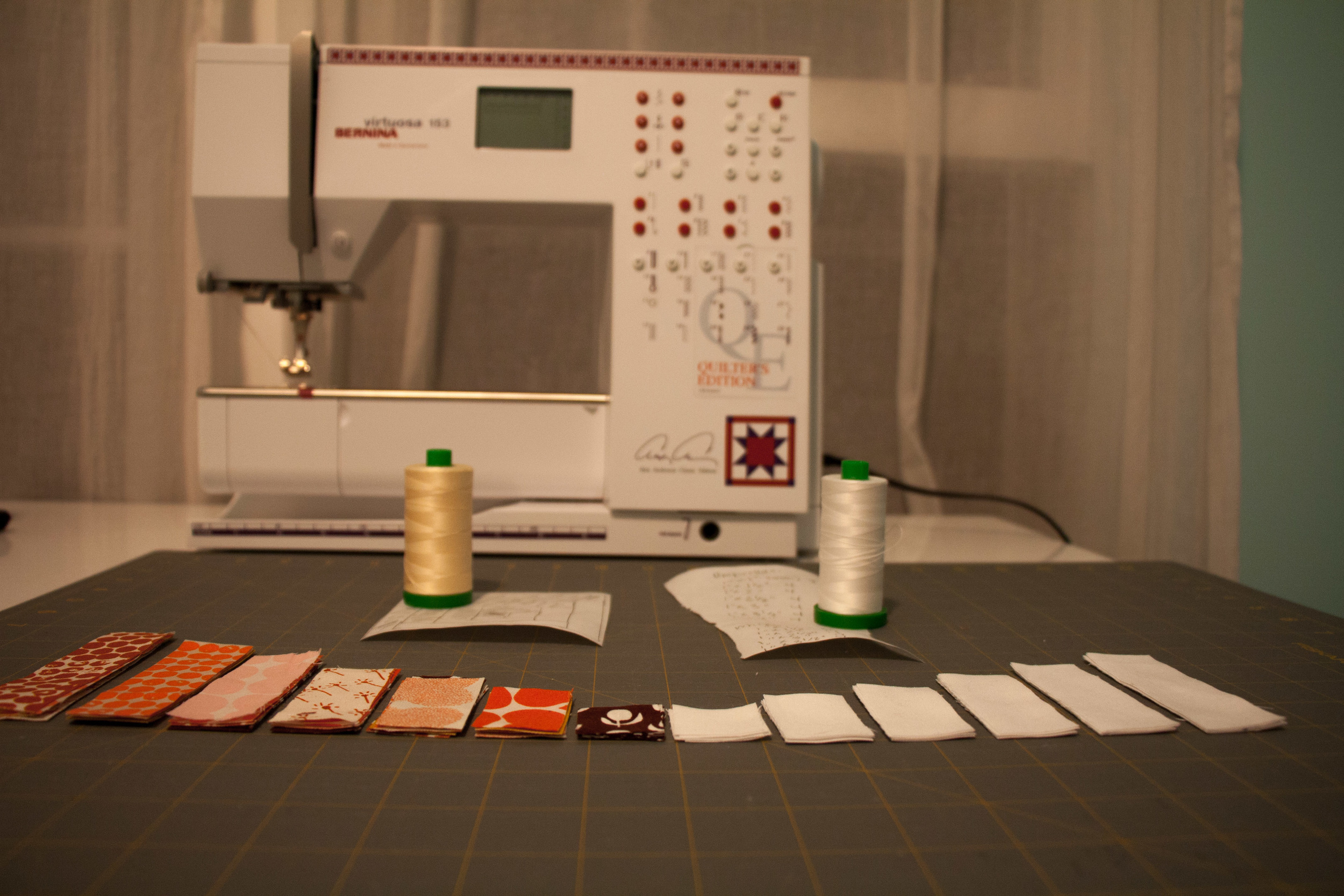Adventures With Knits
I've had a rocky relationship with knit fabrics. About a year ago, I bought some gorgeous knit fabric and set out to make a pilot cap for a friend's kiddo. The pieces of the hat were supposed to be stitched together with a mock overlock or zigzag stitch. It would be an understatement to say it did not go well. I ended up with a horrifying crumple of fabric with a stretched out, jaggedy seam. I managed to laugh instead of cry, but it was close! I tried the hat again a few months later. It went slightly better that time, but still nowhere near the quality that I would feel good about giving as a gift.
I guess hope springs eternal, because I gave knits another try on a small scale this spring when I made a rabbit softie. Sewing knits with a straight stitch went a lot better, so I took on a bigger project with with this receiving blanket. It was still a simple project to be sure, but this is how we build skills and confidence, right?
I made this 36 inch square receiving blanket for a pregnant coworker who loooves giraffes. I ordered the fabric from Spoonflower. Isn’t it cute?
Spoonflower prints its organic cotton knit in 56 inch widths. I bought a yard and trimmed it to 36 inches square. Then I used a plate to draw curves over the corners, and cut them down. (As I’ve mentioned a few times before, I am currently loving the look of curved corners.)
Curved corners are especially important for a knit blanket like this one, because it’s bound in double-fold binding, which would not work with traditional square corners. I made the double-fold binding with a stretchy ribbed knit from one of my local fabric stores, Bolt. I cut it into 2 ½ inch widths and stitched them together in one long piece. Then I pressed the long piece in half length-wise, and then opened it back up and folded the raw edges into the middle, pressed it again, and then folded it in half. Then I sandwiched the 36-inch square piece of knit fabric between the two halves of the ribbed binding, pinned it in place, and stitched it in place using coordinating thread.
I had a significant amount of the giraffe print knit left over, so I bought some terry cloth and made some simple burp cloths to go with the receiving blanket. I took same-sized rectangles of the knit and terry fabrics and sewed around the edges with a half-inch seam allowance, leaving a small gap to turn the fabric right side out. After I turned the fabric out, I top-stitched a quarter of an inch around the edges to finish it off.
Last but not least, I bought a super cool board book, Alpha Block, to go with the receiving blanket and burp cloths.
Maybe I'll try that pilot cap again sometime this winter. Third time is bound to be a charm, right?






























































